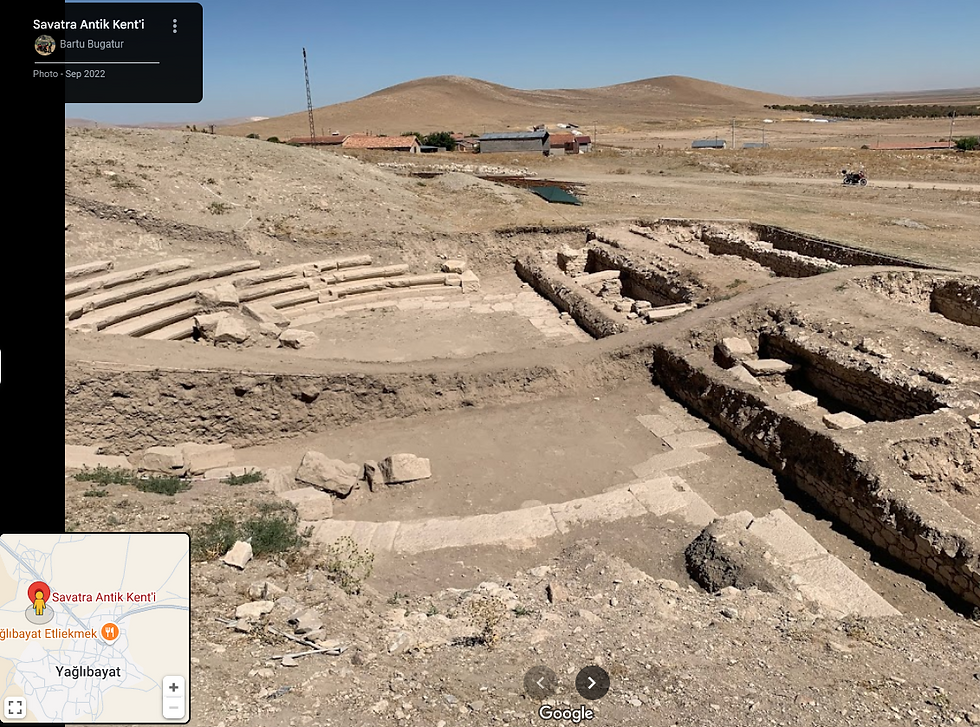While this is not the prettiest coin - it is an interesting coin with a water-god and a fish on the reverse of a coin, from an place, Savatra, that was known for well-water, but is otherwise a very dry place.

Antoninus Pius (138-161), Lycaonia, Savatra, AE Triassarion (10.22g 26mm)
Obv: ΚΑΙϹ ΑΔΡ ΑΝΤΩΝΙΝΟϹ ϹΕ, laureate head of Antoninus Pius, right
Rev: ϹΑΟΥΑΤΡΕΩΝ, nude lake-god standing, facing, head, left, holding two ears of corn over fish and long reed; to right, small reed
Ref: RPC 7254 (temporary), SNG von Aulock 8651; MANTIS 1944.100.52272; Asia Minor Coins ID #1723
"The regions round Orcaorci and Pitnissus, as also the plateaus of the Lycaonians, are cold, bare of trees, and grazed by wild asses, though there is a great scarcity of water; and even where it is possible to find water, the wells are the deepest in the world, just as in Soatra (Savatra), where the water is actually sold (this is a village-city near Garsaüra). But still, although the country is unwatered, it is remarkably productive of sheep; but the wool is coarse, and yet some persons have acquired very great wealth from this alone."
-Strabo, Geography, 12.6Strabo also describes the largest lake nearby, Lake Tatta, a salt lake:
"Tatta is a natural salt-pan. The water so readily makes a deposit around everything immersed in it, that upon letting down wreaths formed of rope, chaplets of salt are drawn up. If birds touch the surface of the water with their wings, they immediately fall down in consequence of the concretion of the salt upon them, and are thus taken."
-Strabo, Geography, 12.5The fellow on the reverse is not in the reclining pose that we would expect of a river god (See Jochen's Notes on this Coin: Although George Francis Hill suggests Lake Tatta as the relevant lake, there is a smaller Lake that is closer to Savatra, near Obroklu, that could also be the relevant lake).
A modern map (Google) shows The Anxient site of Savatra (near modern Yaglibayat, Turkiye) with no lakes that are close (for scale: Beyshir is about 150km away):

Perhaps this "water god" is a reference to the deep wells? a god of wells? would there be a fish in the well?
Although it doesn't look like the most hospitable aquatic environment - modern Lake Tuz (ancient Lake Tatte) does have fish. This photo from 2017 via Wikipedia. Some more recent photos from 2021 show the lake drying up with water being diverted for farming.

For more on this, see: Fraser, Suzan, and Mehmet Guzel. "Turkey's Lake Tuz Dries Up Due to Climate Change, Farming." Phys.org, 28 Oct. 2021, https://phys.org/news/2021-10-turkey-lake-tuz-dries-due.html.

A photo of the ruins gives a sense of the dry region:

A few other relevant references to Soatra (Savatra).

"The type of no. 2 (PL ii. 8) is, however, certainly a water-deity of some kind, and if the country is waterless must represent a salt lake in the neighbourhood, and that can only be Lake Tatta."
- George Francis Hill, Catalogue Of The Greek Coins Of Lycaonia Isauria And Cilicia, 1900
"Savatra, or Soatra, is fixed with a degree of certainty unusual in Lycaonia; it was on the direct road from Laodicea Katakekaumene to Archelais, as has been shown above; it was not far from Archelais Garsaoura (Strab., p. 568); it was in the waterless Lycaonian plains, supplied by deep wells with water which was sold. These indications point clearly to the ruins, four hours south- west from Eskil which are extensive."
-Ramsay (1890), Historical Geography of Asia Minor, v. IV, pp.343
"SAVATRA.-There is another important site in this district now called Ak-Oren ('White Ruins'), which represents SAVATRA or SOATRA (Strabo, p. 568), as Prof. Ramsay has rightly recognised, though he does not seem to indicate its position quite correctly when he speaks of 'the ruins, four hours south-west of Eskil. Five hours west-south-west of that village is a fairer estimate. It is placed approximately in our map, but we did not revisit it. The remains must formerly have been very conspicuous: weeks before we arrived in this district we were told about the site as the sort of place people in search of ruins should not fail to visit. There is no village (as I understand) beside the ruins, and, to all appearance, the ancient name has migrated to Suwarek, which lies some distance to the west. Thither also great part of the remains has been transported."
-Anderson, J. G. C. (1899). Exploration in Galatia cis Halym. II. The Journal of Hellenic Studies, 19, pp. 280–318.
Comments